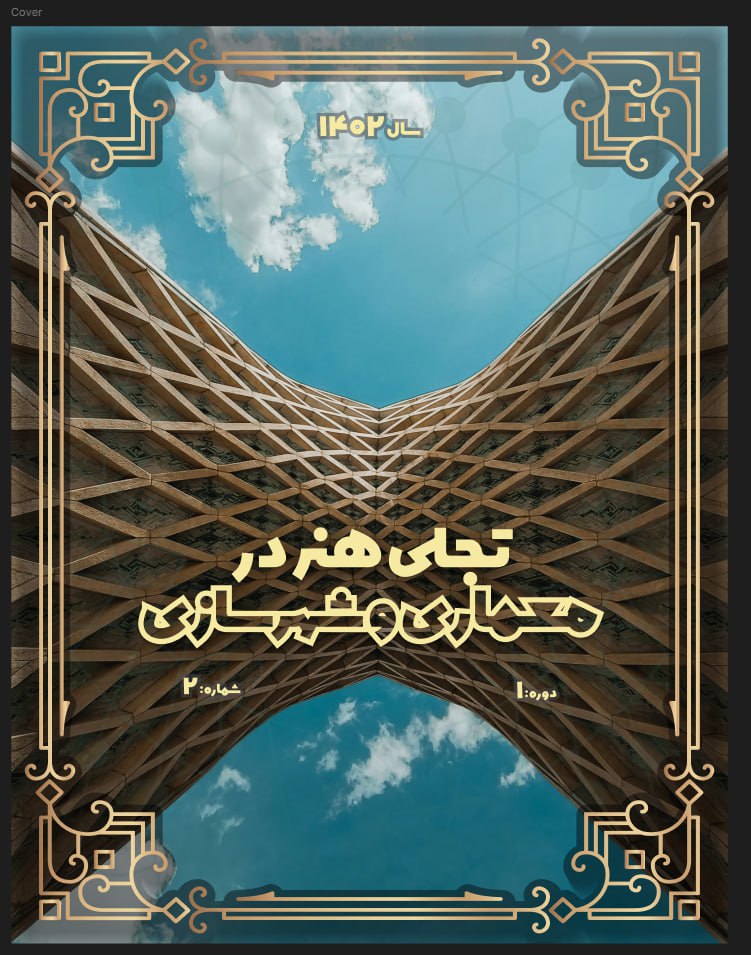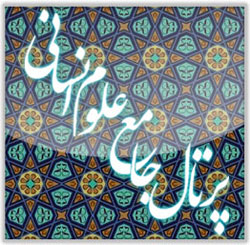Kufa Mosque in the Mirror of Western Studies: History and Islamic Art
Keywords:
Islamic architecture, Kufa Mosque, Mahdism, Islamic Eschatology, Orientalism, Global Government of Divine Justice, Alavid Utopia, Anticipation of DeliveranceAbstract
The Kufa Mosque, as one of the oldest and most significant mosques of the Islamic world, has historically performed multiple functions in religious, political, social, and cultural domains. This research, with an interdisciplinary approach, examines the historical, narrative, jurisprudential, and artistic status of the Kufa Mosque in Islamic texts and in the mirror of contemporary Orientalist studies. The findings of the study indicate that, in Shiʿa thought, the Kufa Mosque is more than a place of worship and is presented as an eschatological axis of expectation for the appearance of Imam al-Mahdi (may God hasten his reappearance) and as the center for the establishment of a global divine government of justice. In Shiʿa narrations, this mosque is mentioned with numerous virtues and is considered the locus of manifestation of the Alavid utopia. Orientalists of the 19th and 20th centuries also studied the ritual, political, and symbolic functions of this mosque, identifying it as an example of the intertwining of religion and politics in early Islamic civilization. Furthermore, the architectural and artistic dimensions of the Kufa Mosque—from the simple structure of early Islam to the magnificent ornamentations of later periods—reflect the cultural and religious transformations in Islamic history. The Kufa Mosque holds a central role in Shiʿa religious rituals, particularly in the ceremonies of the mid-Shaʿban night and in supplications of anticipation, and is perceived as a bridge between Islam’s historical past and its promised religious future. Accordingly, a comprehensive study of the various dimensions of this mosque contributes to a deeper understanding of the doctrinal, social, and artistic dynamics within Islamic civilization.
Downloads
References
1. Ibn Sa'd MiSd. Al-Tabaqat al-Kubra. Beirut: Dar Sadir; 1968.
2. al-Baladhuri AiY. Futuh al-Buldan. Cairo: Dar al-Kutub al-Misriyya; 1956.
3. Waines D. Kufa. Encyclopaedia of Islam. Leiden: Brill; 1960.
4. Mudarrisi Tabataba'i SH. Maktab dar Farayand-e Takamul. Tehran: Mowla Publications; 2001.
5. Majlisi MB. Bihar al-Anwar. Beirut: Mu'assasat al-Wafa; 1983.
6. Nu'mani MiI. Al-Ghaybah. Tehran: Manshurat Sadduq; 1977.
7. Kulayni MiYq. Al-Kafi. Tehran: Dar al-Kutub al-Islamiyya; 1987.
8. Lammens H. Les Sanctuaires de l'Islam. Revue du Monde Musulman. 1912;12:314-8.
9. Mervin S. Najaf: Porte de la sagesse. Paris: UNESCO; 2015.
10. Van Vloten G. Recherches sur la domination arabe. Leiden: Brill; 1894.
11. Masseno E. Histoire de la domination des Arabes. Paris1876.
12. Eliade M. The Sacred and the Profane: The Nature of Religion: Harcourt, Brace & World; 1957.
13. Rispler-Chaim V. Islamic Medical Ethics in the Twentieth Century: Brill; 1995.
14. Ibn Khaldun Aa-RiM. Muqaddimah Ibn Khaldun. Tehran: Elmi Farhangi Publications; 2004.
15. Ibn al-Athir Ia-D. Al-Kamil fi al-Tarikh. Beirut: Dar Sadir; 1965.
16. Creswell KAC. Early Muslim Architecture: Oxford University Press; 1969.
17. Hill D. Islamic Architecture of Persia. London: Faber & Faber; 1963.
18. Blair S. The Art and Architecture of Islam: 1250-1800. Bloom J, editor: Yale University Press; 1994.
19. Madelung W. The Succession to Muhammad: A Study of the Early Caliphate: Cambridge University Press; 1997.
20. Ibn al-Jawzi Aa-RiA. Al-Muntazam fi Tarikh al-Muluk wa al-Umam. Beirut: Dar al-Kutub al-Ilmiyya; 1992.
21. Unesco. Restoration Projects in Iraq: UNESCO Publishing; 2015.
22. Bloom J. The Grove Encyclopedia of Islamic Art and Architecture. Blair S, editor: Oxford University Press; 2009.
23. Hurr al-Amili MiH. Wasa'il al-Shi'a. Qom: Mu'assasat Al al-Bayt; 1988.
24. Shaykh Tusi MiH. Tahdhib al-Ahkam. Qom: Dar al-Kitab al-Islamiyya; 1987.
25. Ibn Taymiyyah AiAa-H. Al-Fatawa al-Kubra. Beirut: Dar al-Kutub al-Ilmiyya; 1911.
26. Ibn Majah MiY. Sunan Ibn Majah. Beirut: Dar al-Fikr.
27. Ibn Hajar al-Asqalani AiA. Fath al-Bari Sharh Sahih al-Bukhari. Beirut: Dar al-Ma'rifa; 1998.
28. Shaykh Abbas Q. Mafatih al-Jinan. Qom: Dar al-Huda Publications; 2001.
29. Bulliet R. Islam: The View from the Edge: Harvard University Press; 1979.
30. Goldziher I. Introduction to Islamic Theology and Law: Princeton University Press; 1905.
31. O'Kane B. The Mosques of Egypt. Cairo: The American University Press; 2001.
Downloads
Published
Submitted
Revised
Accepted
Issue
Section
License
Copyright (c) 2025 Saeed Jazari Mamoui

This work is licensed under a Creative Commons Attribution-NonCommercial 4.0 International License.









